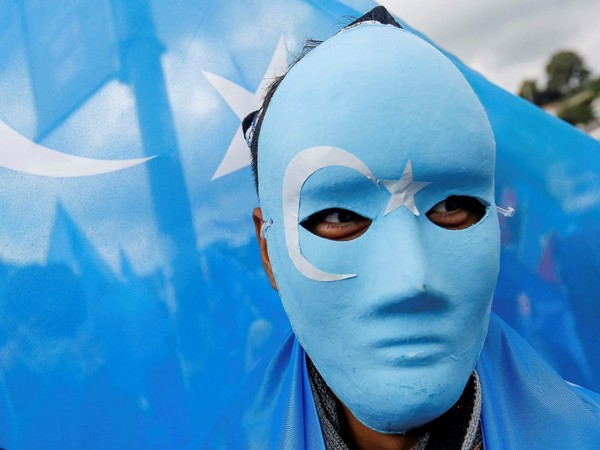A trove of files obtained by hacking into China’s Xinjiang police computers contain first-ever image material from inside camps that “implicates top leadership” and has camp security instructions that describe heavily armed strike units with battlefield assault rifles, according to a Washington-based researcher.
Adrian Zenz, Director and Senior Fellow in China Studies at the Victims of Communism Memorial Foundation in Washington, said that the material is unprecedented at several levels.
“A huge trove of files obtained by hacking into Xinjiang police/re-education camp computers contain first-ever image material from inside camps, reveal Chen Quanguo issuing shoot-to-kill orders, Xi Jinping demanding new camps because existing ones are overcrowded,” said Adrian Zenz, who made a series of tweets.
He attached an image which shows a handcuffed man being taken by police with his face covered.
“The material is unprecedented on several levels: 1. High-level speeches, implicating top leadership and containing blunt language 2. Camp security instructions, far more detailed than China Cables, describe heavily armed strike units with battlefield assault rifles,” Adrian Zenz, attaching other picture which has armed security personnel with their guns trained.
According to the researcher and his team, the Xinjiang Police Files contain an encrypted archive with images of several thousand persons taken in the first half of 2018 at police stations and detention centres in Konasheher county, Kashgar prefecture – a region in southern Xinjiang that is predominantly inhabited by the Uyghur people. In 2018, these regions were ordered to photograph a substantial share of the population as part of biometric data collection. Each image filename contains a timestamp and the person’s government ID number.
“The files also contain about 450 spreadsheets from the region that corroborate the identity of the depicted persons. They reveal that in 2018, at least 12.1 per cent of all ethnic adults in the country were in detention – including 2,884 of the photographed persons. Among them are 15 minors. The youngest detained person depicted in these images is a 15-year old girl and the oldest is a 73-year old woman,” said the team led by Adrian Zenz which analysed and authenticated the material.
“Some of these 2884 persons were probably photographed prior to their detention and others likely during their internment. Since these persons are victims, the full set of 2,884 images is made available on this website in original form”.
Adrian Zenz said original filenames have been truncated for privacy reasons so as to not reveal each person’s full ID number.
“Vivid image of police drills, and over 5,000 images of persons taken at detention centers/police stations, 2,884 of them are interned. 4. Spreadsheets showing vast scale of internments: over 12 per cent of adult population of Uyghur county in 2018 shown in camps or prisons. You can view and download many of the files, documents and nearly 2,900 images of detained persons from the #XinjiangPoliceFiles website,” Adrian Zenz said in tweets.
“The #XinjiangPoliceFiles contain a very large amount of visual material, including police training PowerPoints, image material from Xinjiang, including sensitive material showing police stations, police headquarters etc. This significantly aided in the authentication.”
“The #XinjiangPoliceFiles contain for example the entire unredacted Xinjiang Papers document no.5 on history (the leaked Xinjiang Papers contained only a redacted version of this internal document). Images straight from police computers are powerful – especially when they contain so much raw information. Uncropped wide-angle shots show plenty of background, in this case a police officer in SWAT gear, with his baton at the ready,” he added.
China has faced criticism for its “supression of ethnic minorities including Uyghurs”.
Human rights campaigners have accused the ruling Communist Party of China of committing widespread abuses in Xinjiang in the name of security, steps which include confining people to internment camps, forcibly separating families and carrying out forced sterilization.
For its part, China has said these facilities are “vocational skills training centres” that are necessary to “counter” extremism and improve livelihoods. Chinese officials said in late 2019 that most “trainees” had “graduated” from the centres.
The United Nations High Commissioner for Human Rights Michelle Bachelet recently visited China and Xinjiang.
The US has accused China of genocide in Xinjiang, and an unofficial and independent UK-based tribunal ruled in December 2021 that Beijing is indeed guilty of genocide.
In March 2022, nearly 200 rights groups had demanded that Bachelet’s office release its long-postponed report on the rights situation in Xinjiang.

